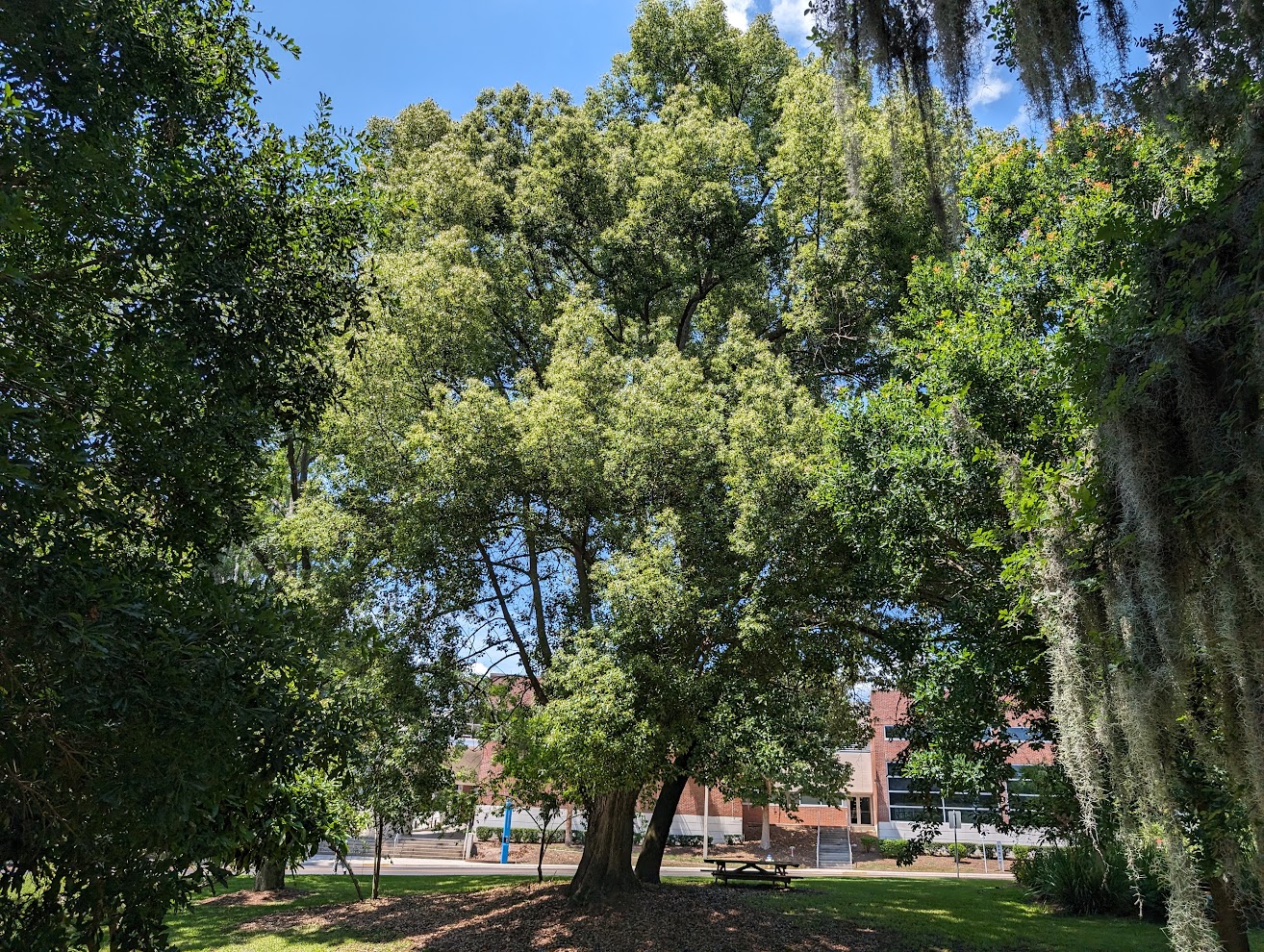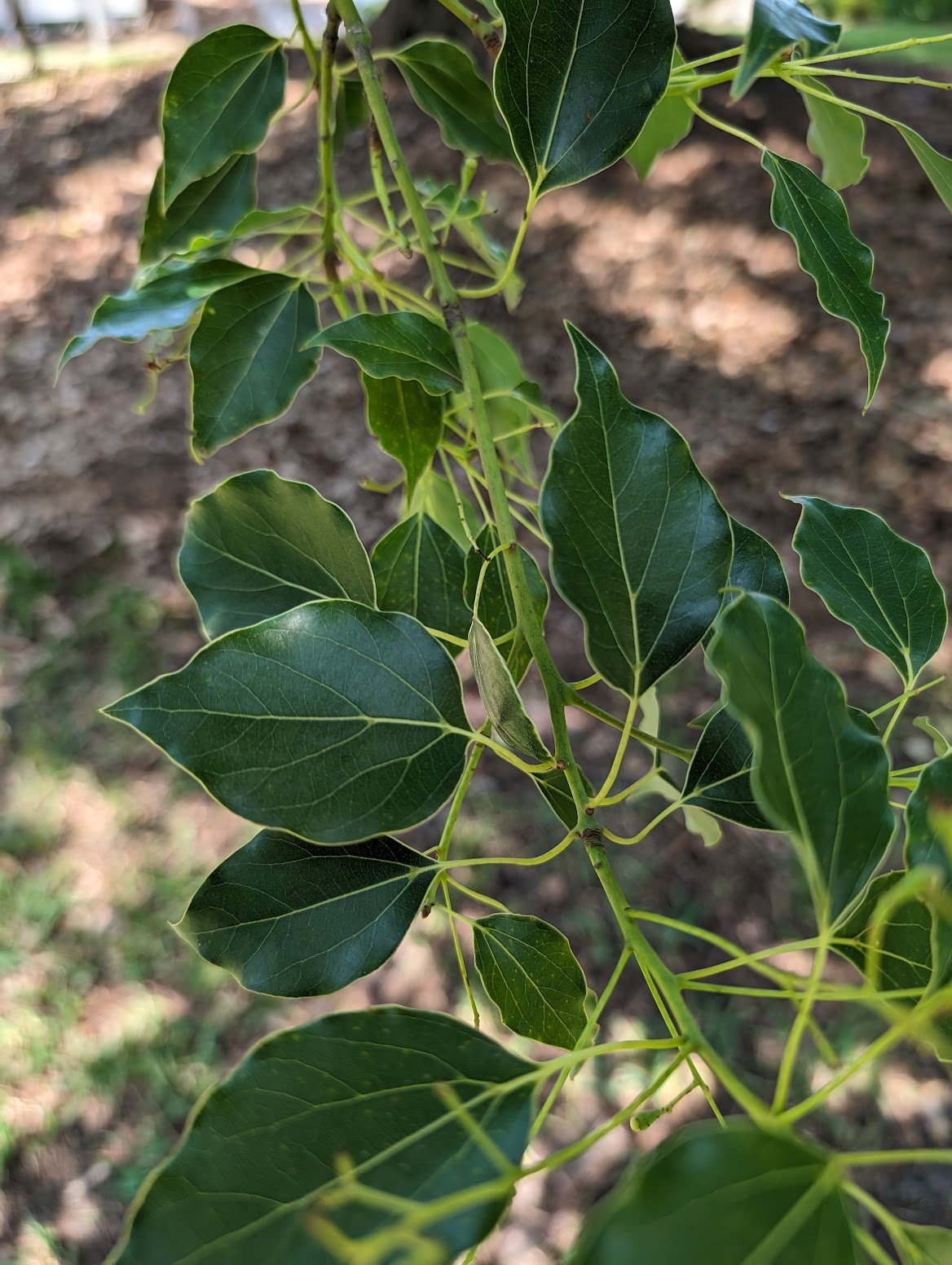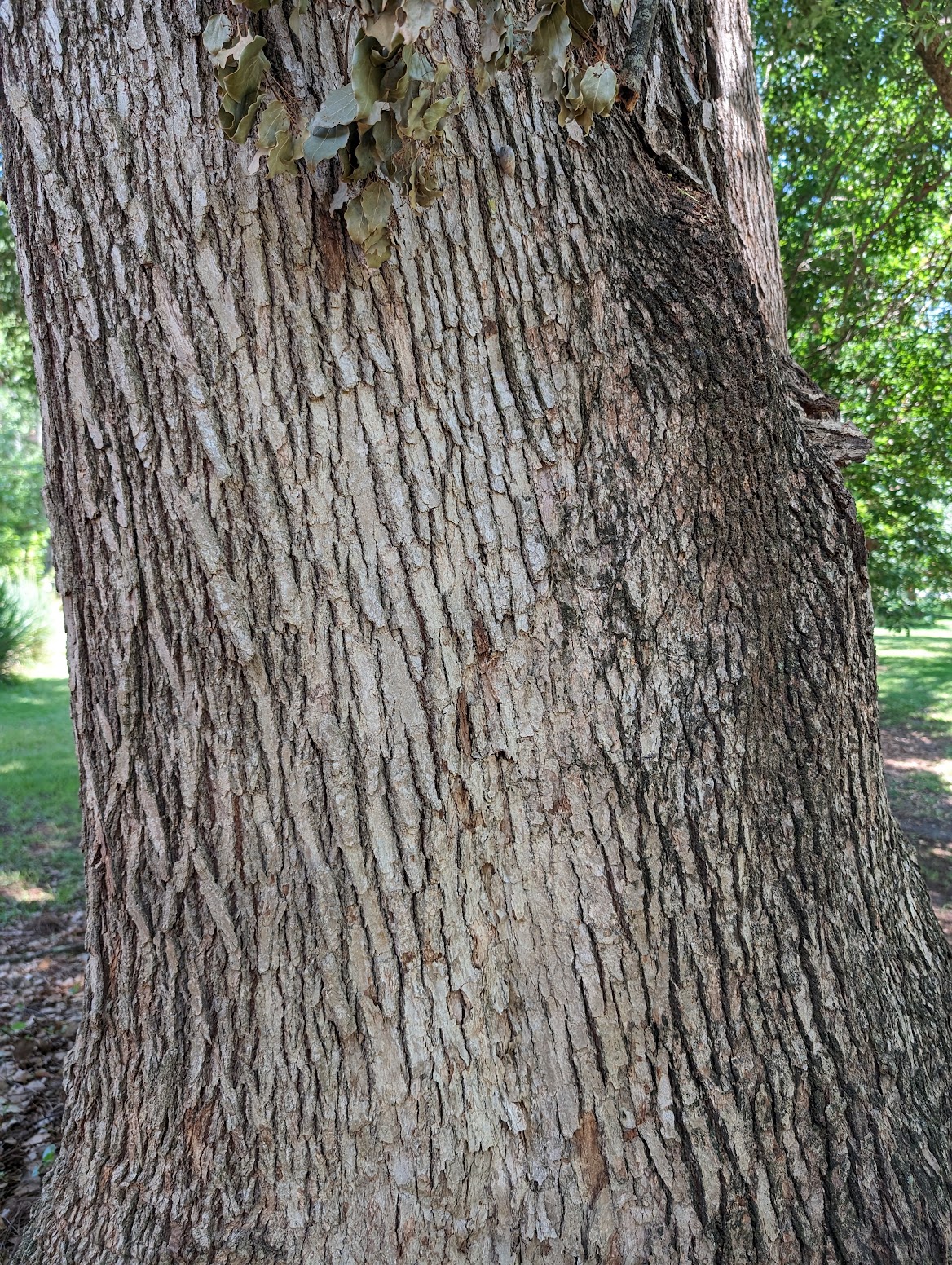Lauraceae – Laurel Family
In 2024, this camphor tree specimen was 95 feet tall and 45 inches in diameter. Based on USDA Forest Service models, it will absorb approximately 253.47 lbs. of carbon over the next 20 years. This tree alone will offset up to 1,026 car miles worth of carbon dioxide.
See all species on our Campus Tree Tour.
Introduction
The camphor tree’s evergreen leaves are dark green and glossy, and its widespread canopy creates ample shade. It produces black, pea-sized fruit that serves as a food source for various birds. However, the camphor tree is categorized as invasive due to its high seed production and dispersal by birds, resulting in the displacement of native plant communities.
Physical Description
Life expectancy: Up to 150 years
Height: 40 to 50 feet
Crown: 50 to 70 feet
Diameter: Up to 6 feet +
Bark: Dark green when younger. As it matures, it develops tan, thicker bark with distinctive long, vertical fissures.
Leaves: Evergreen, simple, and alternately arranged upon the twig. Leaves have sinuated (wavy) margins and yellow veins. At the leaf base, there are two bumps, or callouses, where two major veins extend outwardly.
It is a glossy, dark green on top and glaucous (greyish-blue) on the underside of the leaf. Has a strong odor when crushed.
Twigs: Dark green when young, becomes brown with age.
Flowers: Small, greenish white flowers that emerge in clusters on panicles during the spring.
Fruits: Small (1/3 inch), fleshy drupes that turn from green to black with maturity.
Key Identification Characteristics: bark, smell of leaves when crushed, callouseites on upper surfaces of leaves.
Past and Present Uses
The camphor tree was first introduced to Florida in 1875 for camphor production and for use as an ornamental landscape tree. Within its native Asian range, the tree was used to produce timber and camphor oil, however, these products were not profitable in the United States. The tree quickly spread from plantations into the natural environment, overcrowding, outcompeting, and threatening native plants as a Category 1 invasive species.
Despite its attractive appearance, camphor trees are not recommended for planting within the U.S. due to its invasive status. Instead, the tree should be managed with care to remove the plants without spreading its seeds. This can be accomplished through mechanical means such as mowing, discing, burning, and physical removal, or chemical means, such as herbicides. If found on display at plant nurseries and garden centers, the camphor tree should not be purchased.
Ecological Importance
Non-Native Range: Found throughout the southeastern United States from North Carolina south to Florida, west to Texas and California.
The camphor tree grows aggressively in a range of wet to dry conditions, invading scrub habitats, sandhills, floodplains, hardwood hammocks, mesic flatwoods, and disturbed ruderal areas. Some native, alternative plants to this tree include Dahoon holly, southern magnolia, southern live oak, and winged elm.
Although the camphor tree threatens native plants, its fleshy fruits attract myriad birds. These birds aid in seed dispersal, increasing the spread of the tree. As a result, it is difficult to remove the tree from the U.S. since it has an effective dispersal method, and a large amount of labor is required to remove the tree from natural or urban settings.
More Information
UF EDIS Document about Camphor Tree
References
Cinnamomum camphora. (n.d.). Landscape Architect’s Pages; Davis Landscape Architecture. Retrieved March 12, 2024, from https://davisla.wordpress.com/category/camphor-tree/
Cinnamomum camphora. (2010). Plants for a Future. https://pfaf.org/user/Plant.aspx?LatinName=Cinnamomum+camphora
Cinnamomum camphora. (2024). Plants.ifas.ufl.edu; Center for Aquatic and Invasive Plants | University of Florida IFAS. https://plants.ifas.ufl.edu/plant-directory/cinnamomum-camphora/
Cinnamomum camphora. (2014). Plants; United States Department of Agriculture and Natural Resources Conservation Service. https://plants.sc.egov.usda.gov/home/plantProfile?symbol=CICA
Cinnamomum camphora. (n.d.). Gardener Plant Toolbox; NC State Extension. https://plants.ces.ncsu.edu/plants/cinnamomum-camphora/
i-Tree. (2006). Tree tools - calculate the benefits of trees!. i-Tree. https://www.itreetools.org/
Kahn, M. (2019, March 18). Camphor Trees - Guide to Growing and Care. Www.mklibrary.com; MK Library. https://www.mklibrary.com/camphor-tree/



